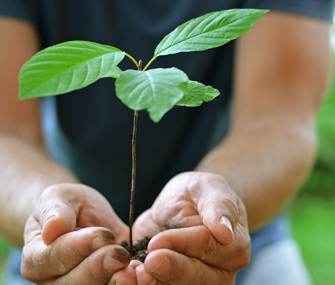Help Endangered and Threatened Wildlife by Taking Action, Going Green
Published on April 12, 2013

Each year, Earth Day offers a chance to step back and consider our impact on the planet. Many of us choose to celebrate by making a donation to an organization or taking part in an event that benefits threatened wildlife. However, you don’t have to wait for a specific holiday to help endangered species — there are a number of ways, both large and small, that you can act to protect endangered animals all year long.
It’s important to protect wildlife because “everything is connected,” says Jennafer Bonello, spokesperson for the World Wildlife Fund. “People need to understand that the choices we make every day affect not only animals in the wild but humans too,” she adds.
If you want to help, you may not even have to look much farther than your own backyard: The National Wildlife Federation estimates that “more than 1,300 U.S. plants and animals already have been federally listed as threatened or endangered and protected under the Endangered Species Act.”
Send a Message
Donating money can certainly send a message of support for wildlife conservation, but it’s not your only option. WWF and NFW have some simple ways for you to reach out and make a difference — without leaving your home. Who knew saving the planet could be so easy?
Sign a petition. Through the WWF’s Conservation Action Network, you can learn about and join movements to protect threatened species. The network offers a wide range of causes you can support to help wildlife at home and abroad: You can sign a pledge to stop wildlife crimes, urge the New Zealand Prime Minister to protect Maui’s dolphins, ask Congress to stop cutting funds for endangered wildlife and environmental protections, and more.
Send a postcard. If you want to show support on a more individual level, you can also contact people directly involved in conservation work, to let them know you appreciate their efforts and encourage them to continue protecting wildlife. One way you can do this is by sending e-postcards to tiger rangers through the WWF website. Rangers work every day in hazardous conditions to protect tigers from armed poachers. You can thank them for keeping wild tigers safe by sending them a specialized message.
Tweet your support. While you’re sending messages, you can also spread the word about the importance of wildlife conservation to your friends and family. Keep the discussion alive all year long so that people don’t forget about endangered animals once Earth Day ends. "The more that people are aware of the issues and threats that affect wildlife and the planet, the more inclined they are to help!” Bonello says. She encourages people to share their efforts on social media, so that everyone can know what you’re up to and be encouraged to get involved.
Go Green
Adjusting your lifestyle to be a bit greener can make a difference for endangered species and their habitats. According to the NWF, “global warming is making the protection of endangered species increasingly challenging.” The changing environment affects plants and animals directly and “can worsen the impact on endangered species of traditional threats, such as invasive species, wildfires and diseases.”
Recycle. Something as simple as recycling a ton of paper can save “7,000 gallons of water, 3 cubic yards of landfill space, and 4,100 kilowatt-hours of electricity,” according to the WWF. The WWF also suggests replacing regular light bulbs with compact fluorescents and being conscious of what you buy.
Shop green. According to Bonello certain types of toilet paper can cause destruction of the rainforest, a vital tiger habitat. She suggests looking for sustainably sourced paper products when buying toilet paper, paper towels, and other tissue products. “Choices we make at the store, what toilet paper we buy, how much we use, affects tigers, rhinos and elephants and where those animals live,” Bonello says. Pet owners can even help their pets go green by reducing their carbon paw print and choosing eco-friendly pet products. You can learn more about how to go green on the WWF website.
Plant a tree. While you’re working on going green, why not get your hands a little dirty and plant a tree? It may sound like a simple act but it can make a big difference. The WWF says “an average tree can absorb one ton of carbon dioxide over its lifetime.” The NWF has a specific program dedicated to this cause called Trees for Wildlife. Eliza Russell, NWF director of education, says the program helps educate the public on how trees “help wildlife have food, shelter and homes for future years,” and how they play a key role by “providing clean air, reducing carbon, cleaning water and improving water quality.” The program is hosting a number of tree planting events around the country this year that you can get involved in.
To learn more about how you can help wildlife, visit the World Wildlife Fund and National Wildlife Federation websites.





